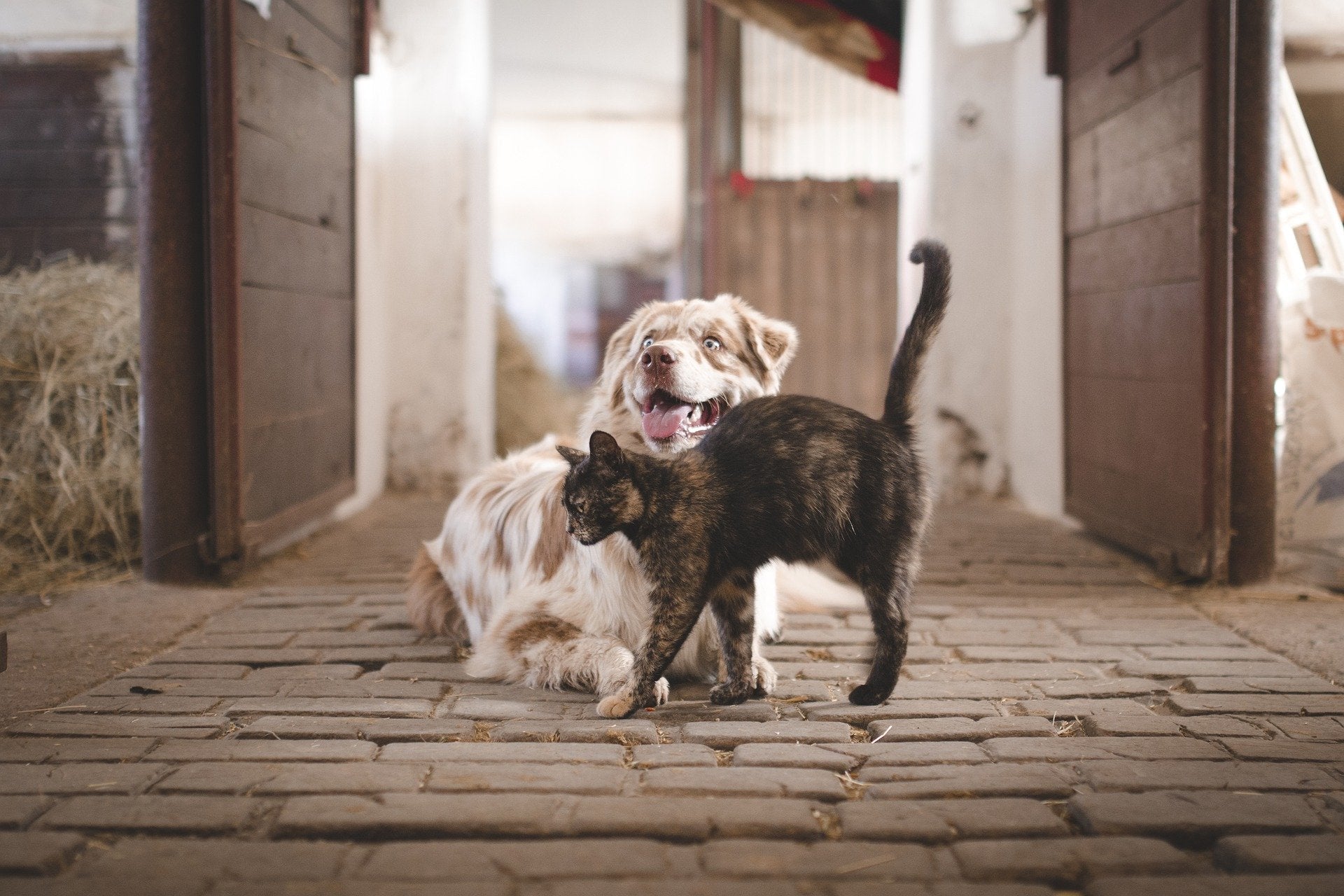September is National Disaster Preparedness Month, and it's the perfect time to think about how to protect your pets in the event of a disaster like a hurricane or wildfire. In this blog post, we'll discuss the importance of planning ahead and preparing a pet disaster kit in case an emergency strikes.

How to Prepare Your Pets for Disasters
There are several simple steps you can take right now to protect your pets in the event of an emergency. Here's a rundown of our top tips to help you prepare for a disaster:
Microchip Your Pets
First, consider getting your pets microchipped if they are good, healthy candidates for a microchip. All microchipped pets should be registered with a national pet recovery database. This will greatly increase the chances of you and your pets being reunited if you get separated during a disaster.
Make Sure They Wear Collars with ID Tags
It's also important to make sure that your pets wear a collar with ID tags. The tags should include the pet's name, your phone number, and address. If a pet gets lost, this information will help people get in touch with you quickly and return your furry friend to you safe and sound. If you're the pet parent of an indoor cat, make sure not to skip this step. Cats can easily escape during a disaster, so an ID tag is a must.
Put Up Rescue Alert Stickers
Rescue alert stickers can help protect your pets in the event of a disaster. The American Society for the Prevention of Cruelty to Animals (ASPCA) offers a free Pet Safety Pack when you sign up to their email list. It includes pet rescue window and door stickers to help alert rescue personnel in the event of an emergency. The stickers have room for your contact details and information about the type and number of pets in your home.
Prepare a Pet Emergency Plan
Another important step you can take right now is to prepare a pet emergency plan. Contact friends and family who live outside your area and ask them if they can take temporary care of your pets if a disaster happens. If staying with friends or family is not an option, make sure to search in advance for pet-friendly accommodations. Websites like Pet Friendly Travel, Bring Fido, and Dog Friendly are great resources for finding places to stay that welcome pets.
You'll also need to be prepared for waiting out a disaster at home. If possible, choose a room in your home that can be designated as a "safe room". Place your emergency supplies in this room, remove potentially dangerous items, and close off any escape routes or places where pets may get stuck.
Last but not least, make sure to prepare a pet emergency kit filled with supplies that will help you protect your pets during a disaster. In the next section of this post, we'll give an overview of the essentials to include in your kit.
How to Assemble a Pet Emergency Kit
Disasters can strike at any time, so it makes sense to be prepared. Having an emergency kit on hand that can be grabbed at a moment's notice is one of the best ways to help protect your pets if a crisis hits. Keep reading for an overview of the essential items that should be included in your kit.
Documents & Identification
Make sure to pack ID cards for all your animals in your pet emergency kit. Each card should include a recent photo, contact information, and details such as the pet's name, age, and breed. We also recommend including up-to-date copies of your pets' microchip information, registration forms, and veterinary records.
Food & Water
When it comes to food and water, you don't want your pets running low. Make sure your emergency pet kit has at least two weeks’ worth of food and water for each pet. You can also include some treats to help your furry friends feel more comfortable during the crisis. Before using your kit, check labels on food and treats every few weeks to make sure they don't expire.
Medications & Supplements
Include a 2-week supply of any medications your pets regularly take. It's also a good idea to pack a month's supply of flea, tick, and heartworm preventatives. If your pets take supplements, remember to add them to your kit. Check out our previous post for a rundown of the Top 5 Healthy Supplements for Dogs & Cats.
Pet First Aid Kit
A basic first aid kit is essential for treating common pet illnesses and injuries. Include items like bandages, gauze pads, cotton swabs, antibiotic ointment, tweezers for removing splinters or ticks, and alcohol wipes to disinfect wounds. Natural herbal and homeopathic remedies can also be very helpful for treating minor ailments. Our previous post, How to Build a Natural Pet First Aid Kit, contains more advice about what to include in your kit.
Travel Essentials
Finally, don't forget to pack travel essentials like pet carriers, bedding, harnesses and leashes, collapsible bowls, and pet toys. If you'll be traveling with cats, you'll also need to bring along a litter box and litter. Worried about forgetting something important? This handy checklist from the CDC outlines all the essentials that should be included in your pet emergency kit.
Immediate Evacuation
For disasters where immediate evacuation may be needed (i.e.: hurricanes, tornadoes, fires, or earthquakes), make sure your pets’ crates are easily accessible and stored in a location the whole family is aware of. In the case of a hurricane or tornado, when you have to suddenly hunker down in a basement or inner room, it will be easier to gather small pets in their carrier when dashing off to safety, especially if you have several pets or two or more cats.
Final Words
National Disaster Preparedness Month is a great time to take action and be ready for the unexpected. Don't wait until something happens – make sure you have a plan in place and an emergency pet kit packed in advance! For more information about pet disaster preparedness, check out this detailed guide from The Humane Society of the United States.



